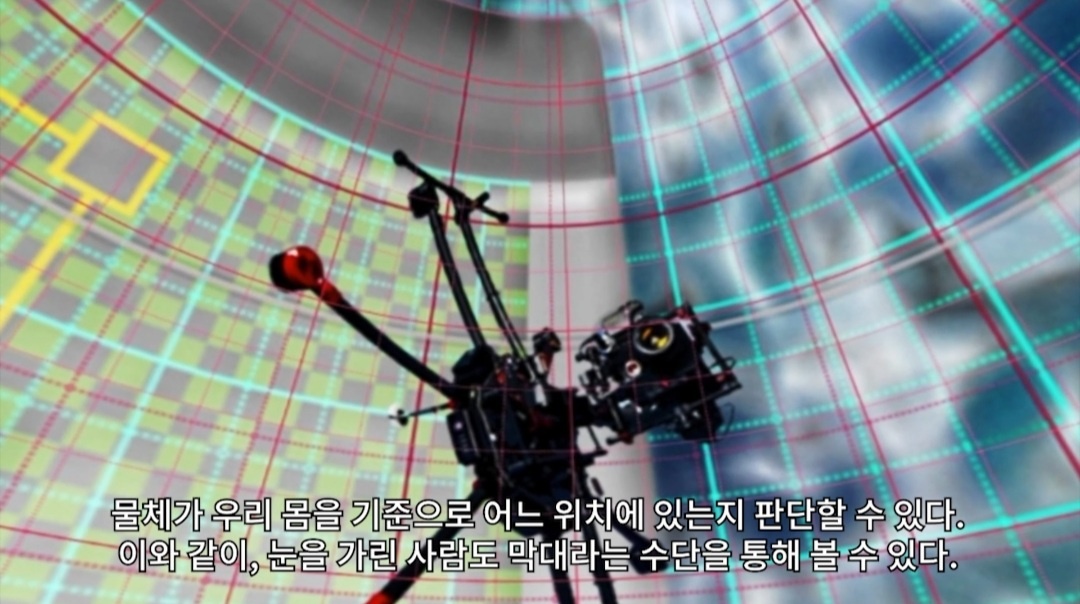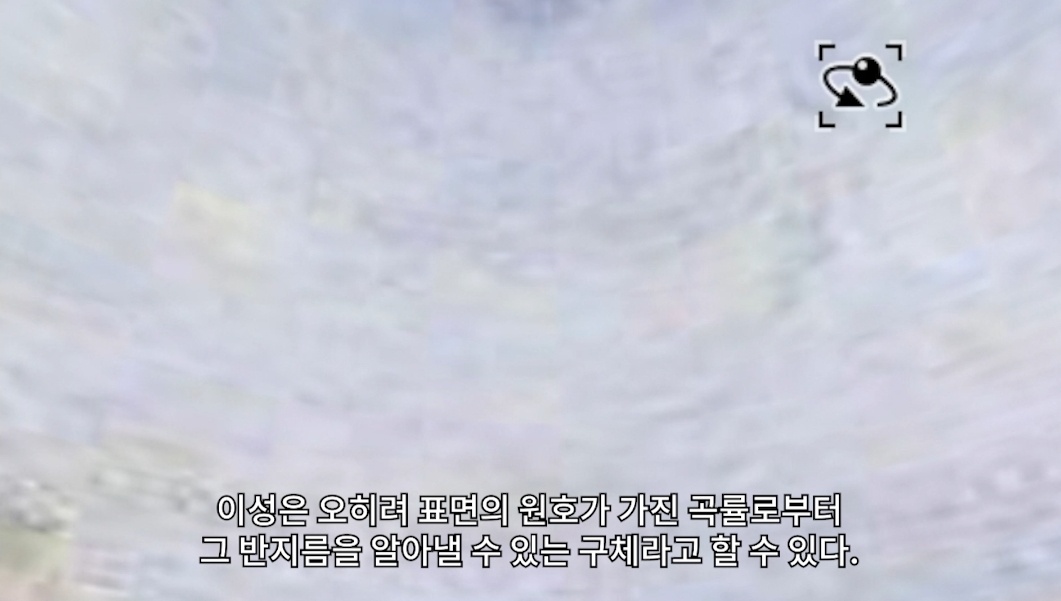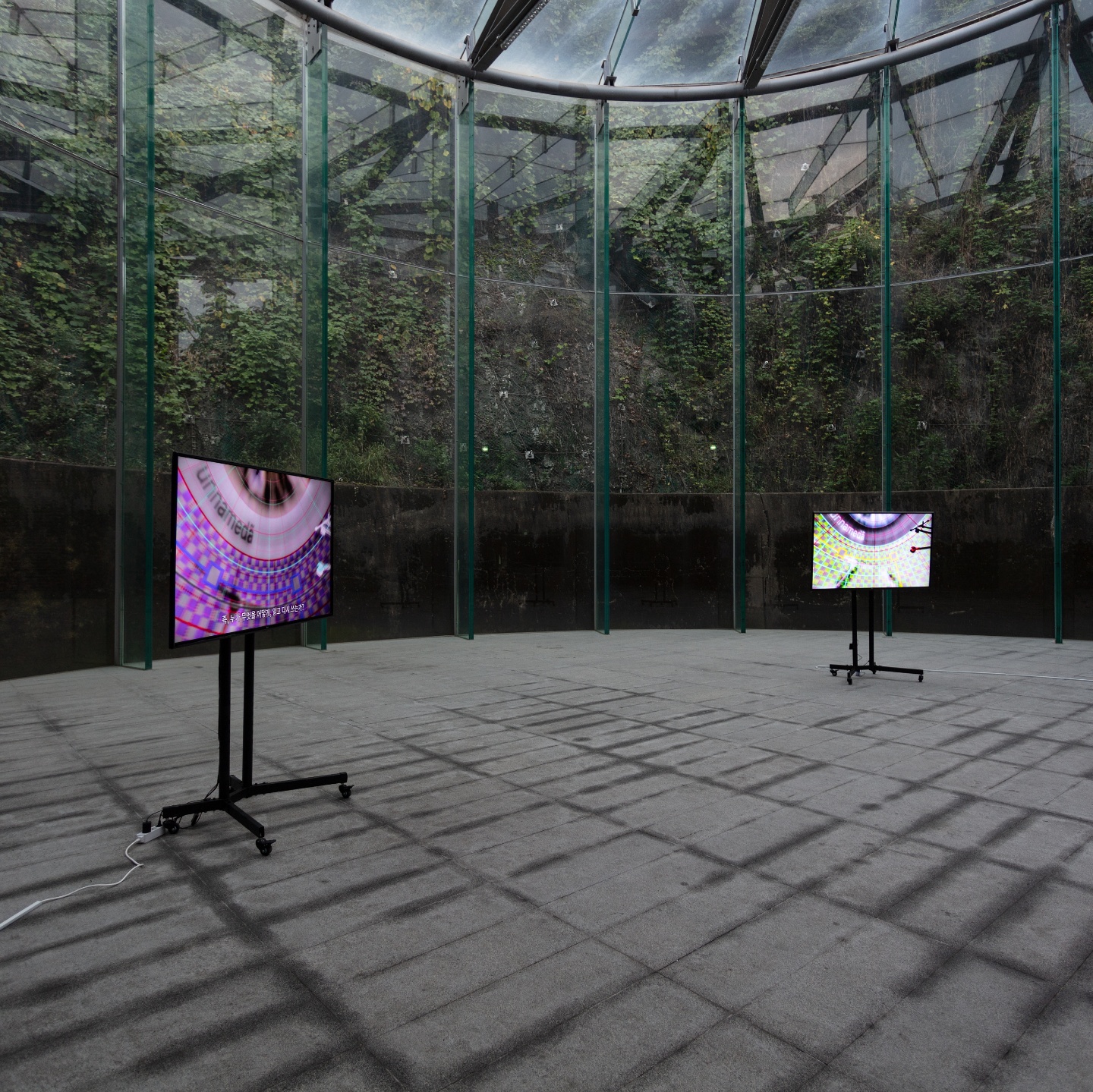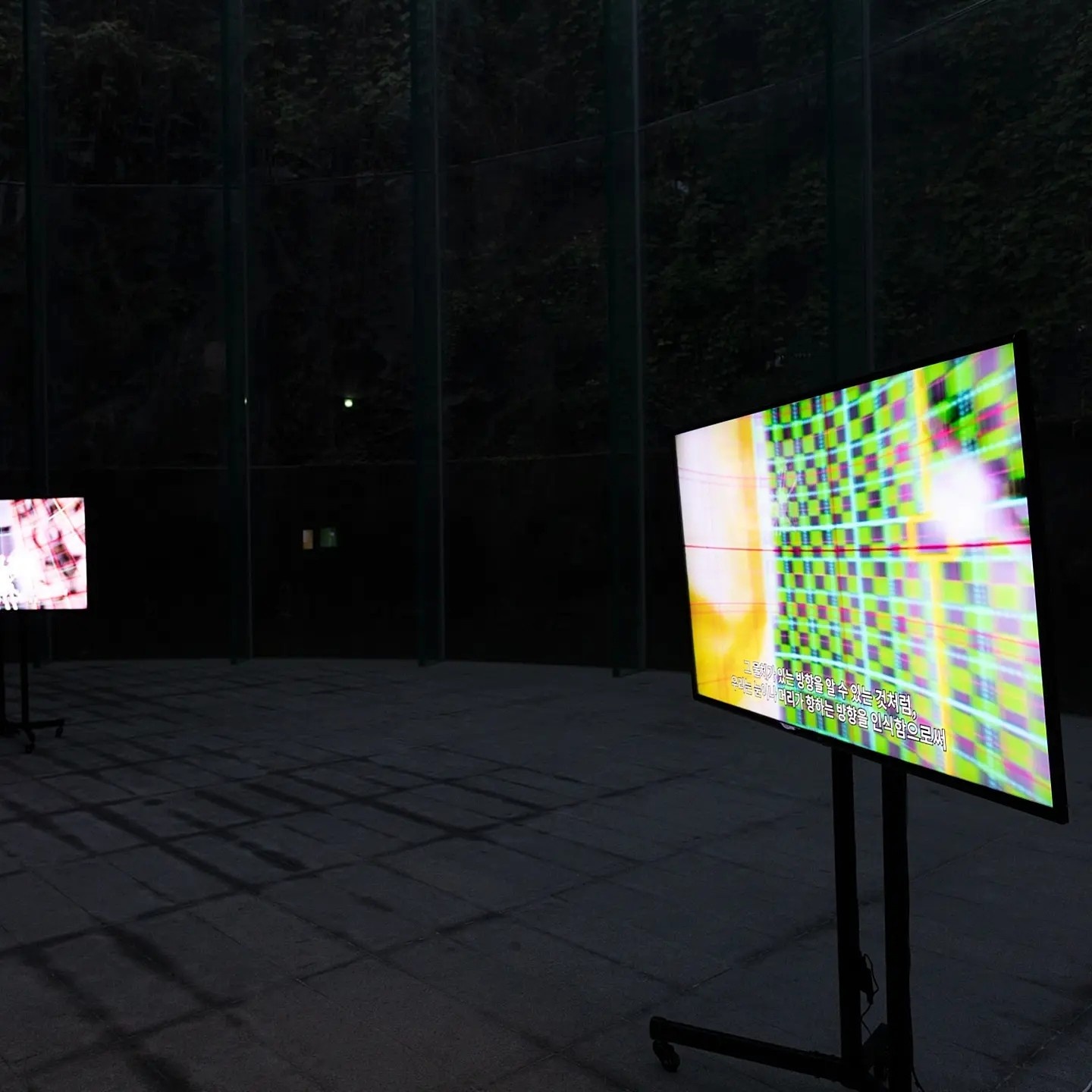









The Turn of the Screw (2021)
Two channel HD video, color, sound, 2 minutes 44 seconds
Voice over : James Adams, Emma Eve
Text: Immanuel Kant, Tom McCarthy
Two channel HD video, color, sound, 2 minutes 44 seconds
Voice over : James Adams, Emma Eve
Text: Immanuel Kant, Tom McCarthy
Gunther Anders defined the world as ‘Makrogerät’ in itself. It represents the entire enormous device system and became our world of its own. Furthermore, the device or technology that shaped the world reached the state where it consumed humans. There is no longer light. We cannot even find the path to salvation. It is because the relationship between the device and humans was already inverted. Humans were already a part of the devices, and accommodate the phantom created by technology from a passive position. This means that humans gradually face situations where it becomes impossible to discriminate between what is truth and untruth (Hyeryun Shim)
Nowadays, the digital protocol is independent of humans and operates autonomously. It is supposed that the users can be liberated from all volume and properties under the idea of ‘infinity’ and be free, but the users eventually face the domination of the intrinsic product that they personally make. Digital software is the basis for this, and all the products sold in the market actively distribute the phantom. This work departs from the following problem awareness. How should humans, machines, and interfaces be perceived? How can human autonomy be secured under the automaticity of the program? The writer focuses on the function of the ‘tool’ designed in the system.
‘Tools’ are means or methods to achieve certain goals and a concept of tool used while working. Unlike the general concept of tools where humans use physical forms to expand on the senses and induce varied outcomes, digital tools calculate accurate shapes and values under the bit input in the program and compute the space produced by the user. Under automatism where it can be cut, pasted, edited, and even change everything arbitrarily based on the composition, humans don’t know about other possibilities or lose awareness without trying to discern. Likewise, the tool that only computes the standardized uniformity does not leave any space for imagination.
<The turn of the screw> is portrayed as an attempt to overturn this format. The tool that can arbitrarily change the scope based on the automation technology of the program differentiates the organizational structure through the intervention of the operator. The irrational points that are discrepant between the scope recognized by the software and the domain selected by the user are actively reviewed, contrasting the general truth. The system repeats adaptation and detachment within the spatial flow without perceiving the entity. As a result, the third-place that cannot be affiliated to any place is founded while it excludes accurate values, calculation, recognition, criticism, and senses. Likewise, we are losing all the independent reflective competence.
귄터 안더스는 세계를 ‘거대기기(Makrogerät)’ 그 자체로 정의했다. 그 자체가 하나의 전체로서 기능하는 거대 기기 체계가 바로 우리 세계 그 자체가 된 것이다. 더 나아가 이미 세계 그 자체가 된 기기나 기술은 인간을 소비하기 이르렀다. 더 이상 빛은 없다. 우리는 구원의 길을 찾을 수도 없다. 왜냐하면 기기와 인간의 관계가 이미 전도 되었기 때문이다. 기기의 일부가 된 인간은 기술이 만들어낸 팬텀을 수동적인 위치에서 수용한다. 이는 점점 더 진리와 비진리의 구별이 불가능한 상황에 처하게 된다는 것을 뜻한다 (심혜련)
오늘날 디지털 프로토콜은 인간으로부터 독립해 자율적으로 작동 하고 있다. 사용자는 ‘무한’의 이념 아래 모든 부피와 물성들로부터 해방되어 자유롭게 될 것이라고 믿고 있으나 결국 점차 자신이 만든 고유한 생산물의 지배하에 놓이게 되었다. 이 근간에는 디지털 소프트웨어가 있으며 시중에 판매되고 있는 산물들은 팬텀을 적극적으로 유통하고 있다. 이 작업은 다음과 같은 문제 의식으로부터 출발한다. 인간과 기계와 인터페이스를 어떻게 바라볼 수 있을까? 프로그램의 자동성 아래 인간의 자율성은 어떻게 확보할 수 있을까? 필자는 시스템 안에 설계된 ‘도구’의 기능에 주목한다.
‘도구’는 어떤 목적을 이루기 위한 수단이나 방법, 일을 할 때 쓰는 연장의 개념이다. 인간이 신체를 사용하여 감각을 확장하고 다양한 결과를 유도할수 있는 일반적인 개념의 도구와는 달리, 디지털 도구는 프로그램에 입력된 비트 아래 정확한 모양과 수치를 계산하여 유저가 주산한 공간을 산출한다. 자르고, 붙이고, 편집하며 모든 것을 임의적인 구성대로 바꿀 수 있는 자동성 아래 인간(user)은 다른 가능성을 알지 못하거나 알려고 하지 않은채 인식을 상실한다. 이렇듯 규격화된 획일성만을 산출하는 도구에는 상상을 위한 공간이 남겨져 있지 않다.
<나사의 회전>은 이러한 체제를 전복하고자 하는 시도로서 그려진다. 프로그램의 자동화 기술에 의거하여 영역을 임의적인 구성으로 바꿀 수 있는 ‘툴’은 작동자의 개입으로 그 조직 구조를 달리한다. 소프트웨어가 인식하는 영역과 사용자가 선택하는 영역 간에 어긋나는 불합리한 지점들은 일반적인 진리와는 달리 적극적으로 검토된다. 시스템은 개체를 인식하지 못한 채 공간의 동선 안에서 순응과 이탈을 반복한다. 결과적으로 그 어느 곳에도 속할 수 없는 제 3의 공간이 탄생한다. 정확한 수치, 계산, 인식, 비판, 감각이 배제된 채로 말이다. 우리는 이처럼 우리의 모든 주체적 성찰적 능력을 상실해 가고 있다.



Jisoo Jit Seo ‘The Turn of the Screw’ T1 Pavilion, Oil Culture Tank Park, 2021